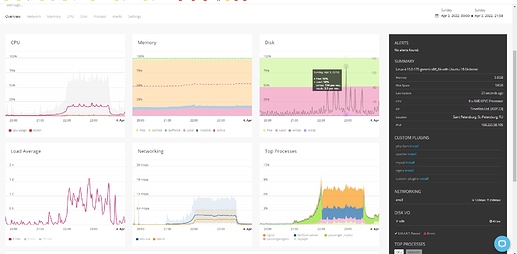Hi, everyone!
I made a website with Wappler.
It works well with a low number of users but when numbers increase, the problems with server begin.
Maybe you can help me with some advice.
.
Here is details.
1. Website is a platform for online quizzes with real live broadcasting. This is not SaaS, this is just a tool for one local company.
2. There are 3-5 games that take place every week, 2-hours long each. Rest of the time there is nothing happening on the website.
3. Website is simple. For the regular user it is just one page, divided in half. On the left side it is broadcast. On the right side is the form for answers. You can check it out here https://riddler-testing.ga/games/test555
It is test server, so you can even login in any name and send form too.
Also, there are 3 pages for admins, where they can change game settings, see the list of teams playing and check the answers.
4. Broadcasting is just an iframe for another app/service Facecast. So my website has nothing to do with it and, I suppose, broadcasting doesn’t affect my server.
5. For hosting I have a VPS from the popular local provider. It has 6 CPU and 6 RAM. On top of that I installed regular Plesk Web Admin. NodeJS used as a backend platform. MySQL for the DB.
6. Basically it is a plain default setup.
Custom changes are at minimum. In Plesk I turned off proxy mode to stop using Apache in order to make Websockets work. And I changed ModSecurity to “Nginx (ModSecurity 3.0)” and changed Rule Set for Custom, manually downloaded Atomic, i think
Also I have installed some free basic extensions in Plesk: ImunifyAV, Traffic Monitor. Also I have installed Plesk 360 Monitoring on VPS.
And that’s it, I believe.
To be honest, I am absolutely not familiar with all this server stuff. So I did just the basic things to make the website up and running.
7. About the problem itself.
When there are about 200 participants playing the game, it goes well.
But recently we tried 500 and it was not good. Participants have seen the website and broadcast, but there were some lost forms. Also, admin pages was loading too long (couple of second) and sometimes page doesn’t opened after refresh, you have to refresh it again to load.
8. For this last troublesome game I have Plesk 360 Monitoring installed on the server. I have screenshots of a situation for that day.
9. Currently I’m trying to get assistance from tech support from my hosting provider. Maybe they will be able to sort this out, but I don’t know.
.
Considering all this and urgency of situation I want to ask some advice and help from community:
1. Does 500 concurrent users count as some kind of a “above typical” server load, so the problem is legit?
Or this is more like a regular load so that means there are some mistakes in my code or server/Plesk settings?
2. What would you suggest I must do in order to diagnose and solve the problem? And what questions should I ask to hosting support?
3. What is the Wappler limit for this kind of project? (how many thousands of concurrent participants/players?) Considering the possibility of a powerful hosting setup, if needed.
.
I would provide any additional information about the project and server if it helps.
Also if someone would be able to provide a paid revision/check up of my project and/or server/Plesk setup, I would be highly grateful.



